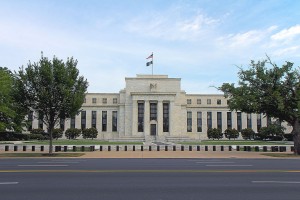US Economy: Spending Slows, Savings Increase and Home Sales Rise
 It’s finally happening. Americans saved more than they spent over the last quarter.
It’s finally happening. Americans saved more than they spent over the last quarter.
Consumer spending on goods and services inched up 0.1 percent in February for the third straight month. Incomes rose by 0.2 percent in February pushing the saving rate from 5.3 in January to 5.4 percent in February.
The Federal Reserve kept the benchmark federal funds rate at 0.25-0.5 percent on March 16 after raising it for the first time in a decade in December last year. But, as demand for labor increases, the central bank can go easy on scaled back forecasts of higher interest rates noting that the economy is exposed to the uncertain global economy.
Personal consumption expenditures (PCE) on goods and services which is the Fed’s preferred inflation metric also increased by a percent, while still staying below the targeted 2 percent.
The lackluster consumer spending however does pose a risk to the first quarter GDP figures estimated at 1.5 percent annually.
Separately, pending home sales also rose 3.5 percent in February to their highest level in seven months according to the National Association of Realtors. Low mortgage rates combined with increased incomes and savings has prodded buyers to sign contracts on new homes.
Numbers at a glance:
- February consumer spending saw 0.7 percent drop in purchases of goods while expenditure on services rose 0.4 percent.
- Forecast for existing-homes sales this year are around 5.38 million, an increase of 2.4 percent from 2015, while the national median existing-home price for all of this year is expected to increase between 4 and 5 percent.
- The average commitment rate for a 30-year, conventional, fixed-rate mortgage was 3.66 percent in February – the lowest since April 2015 at 3.67 percent.
Last modified: April 20, 2019































